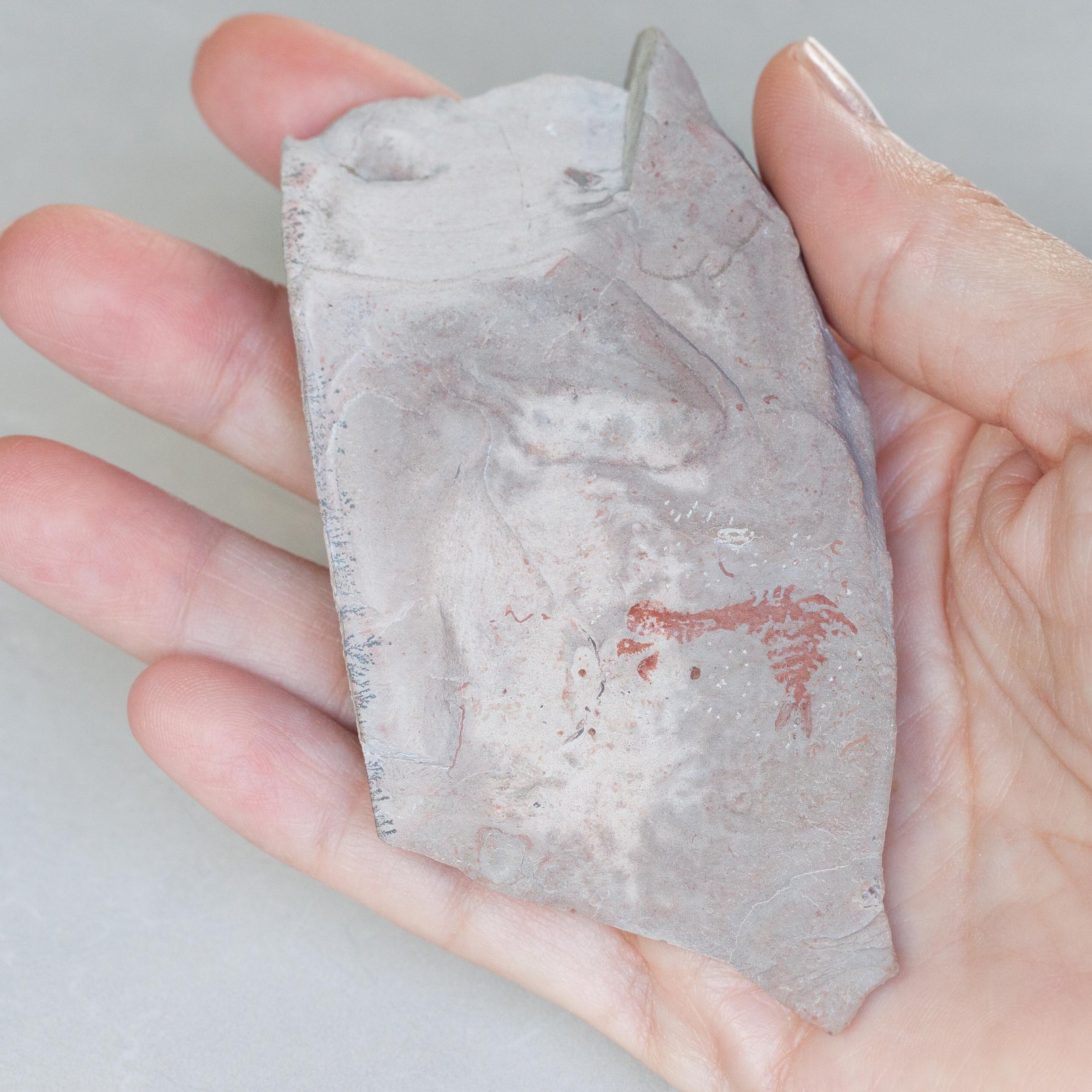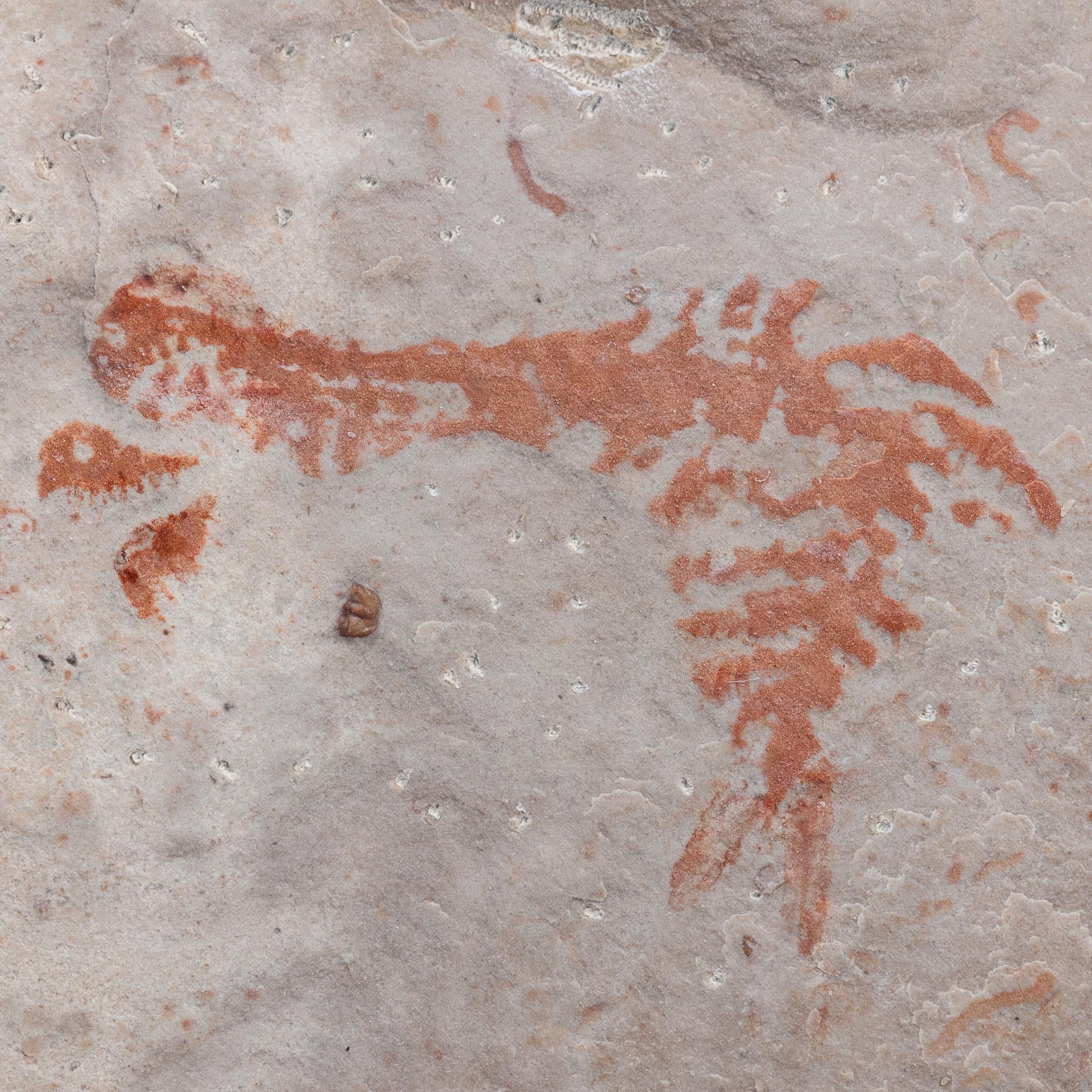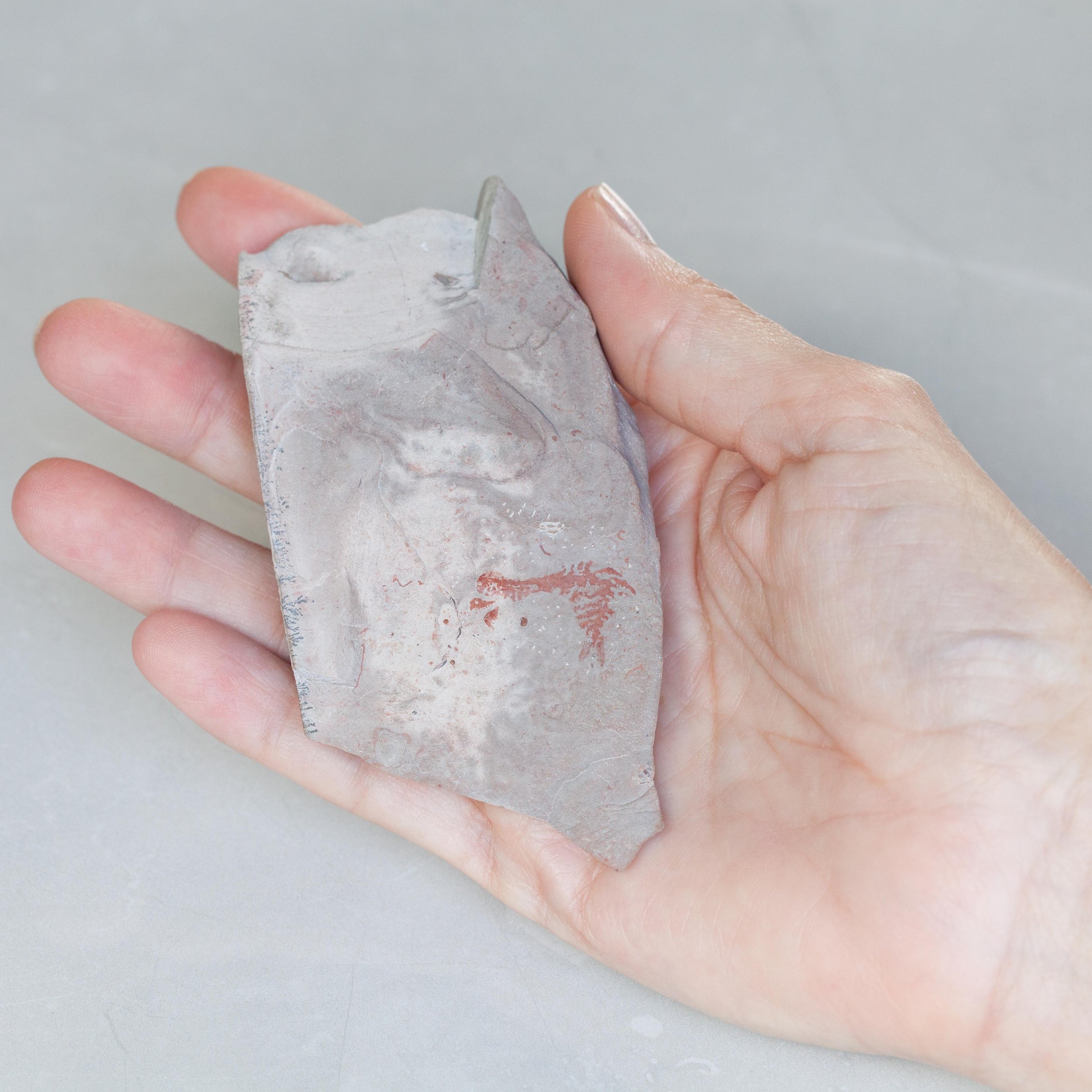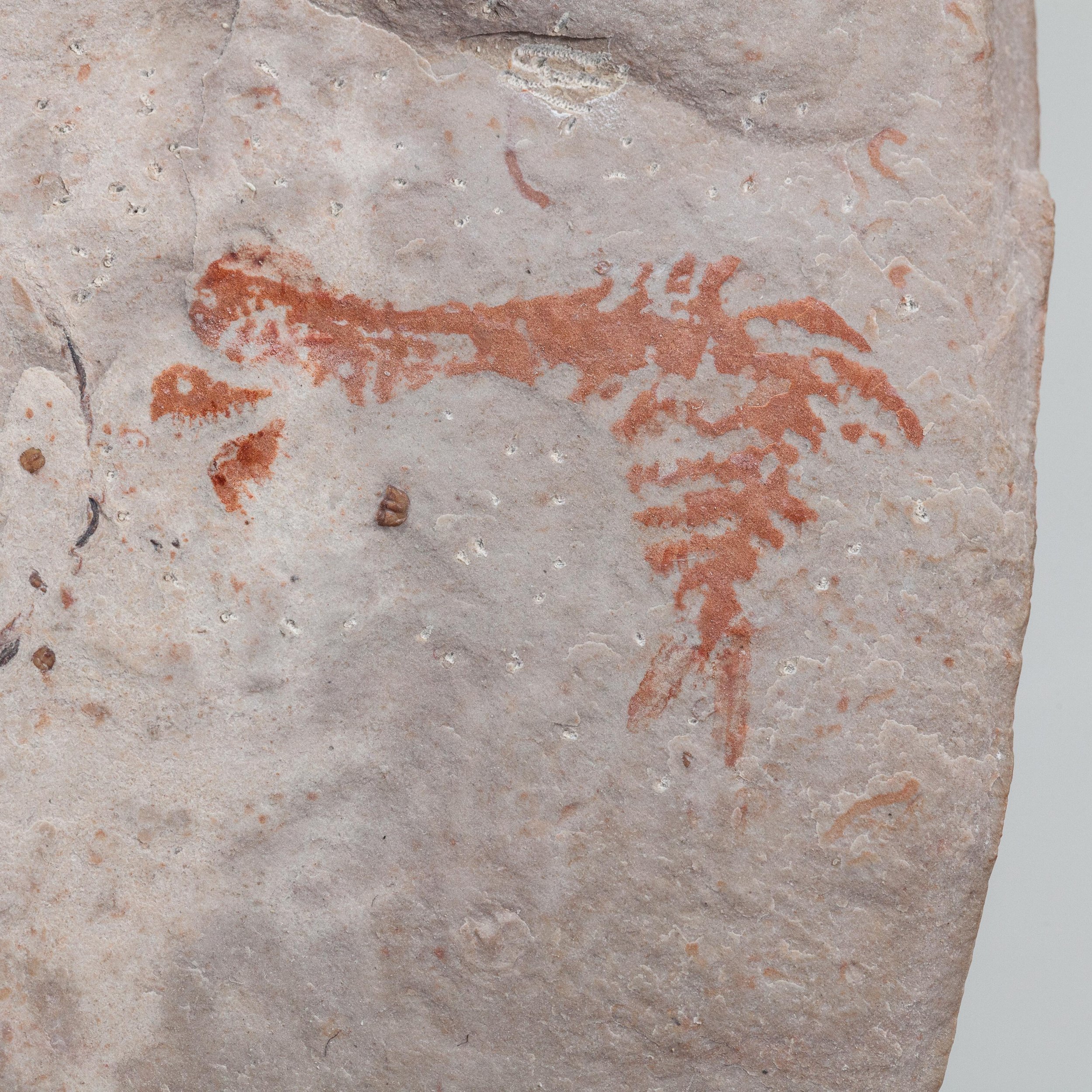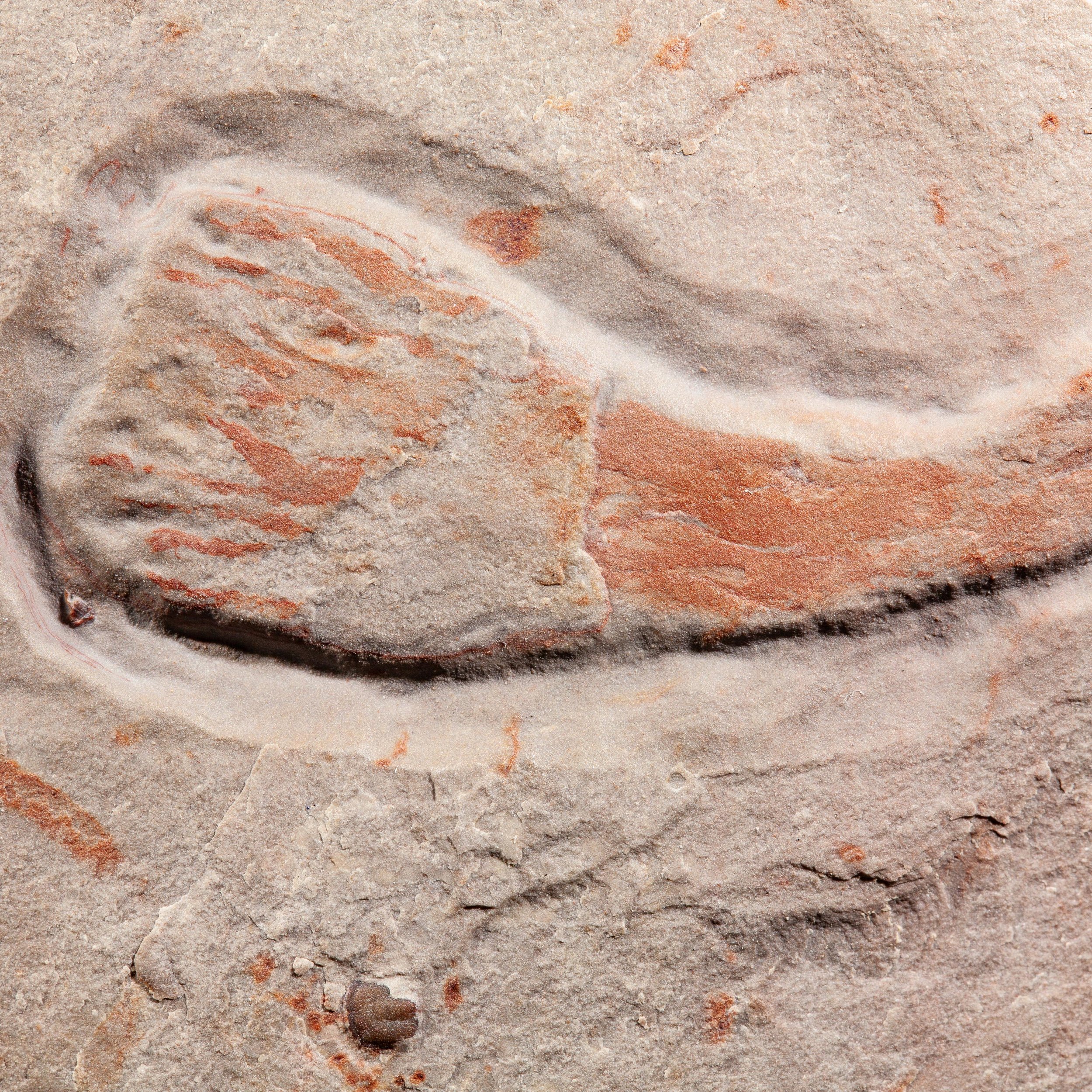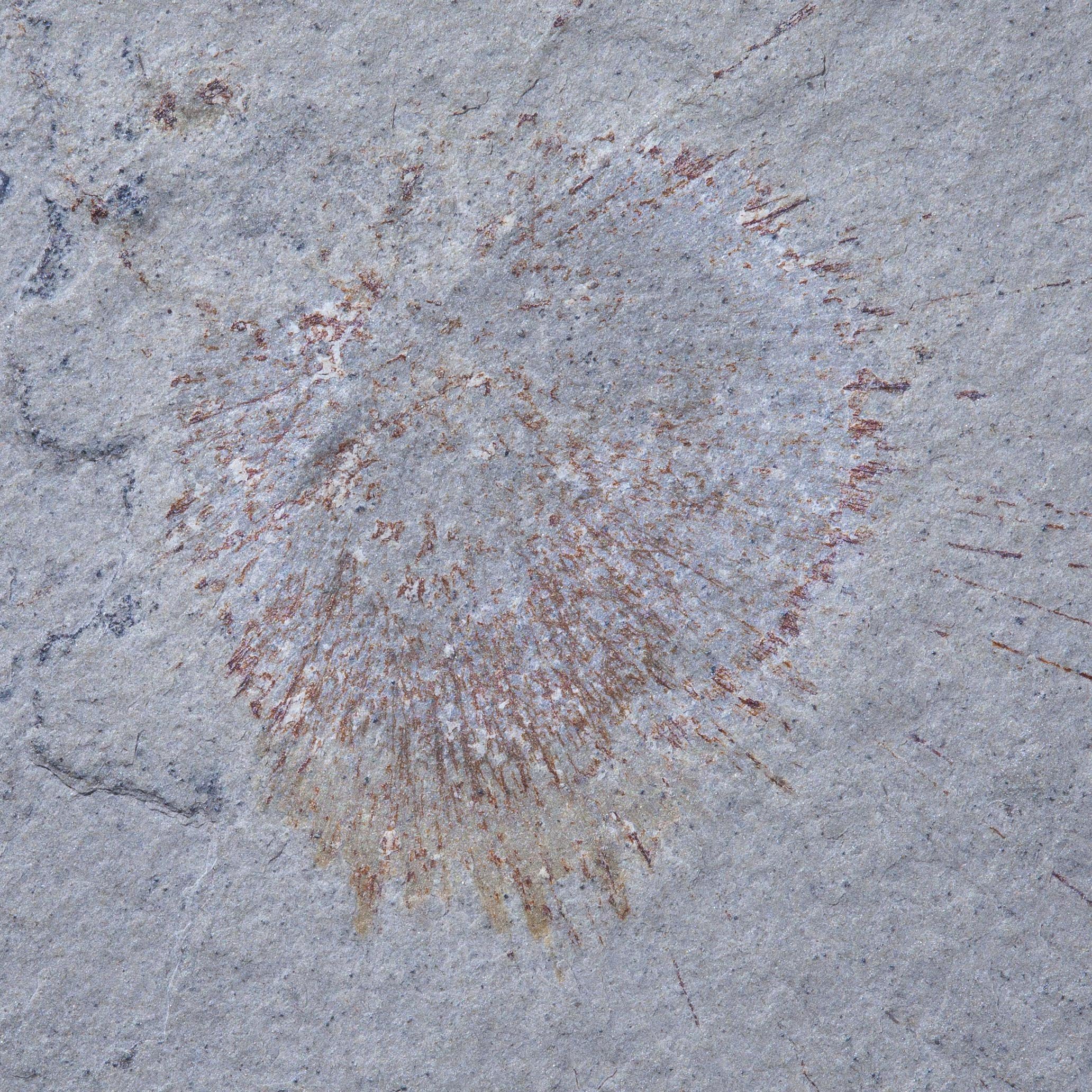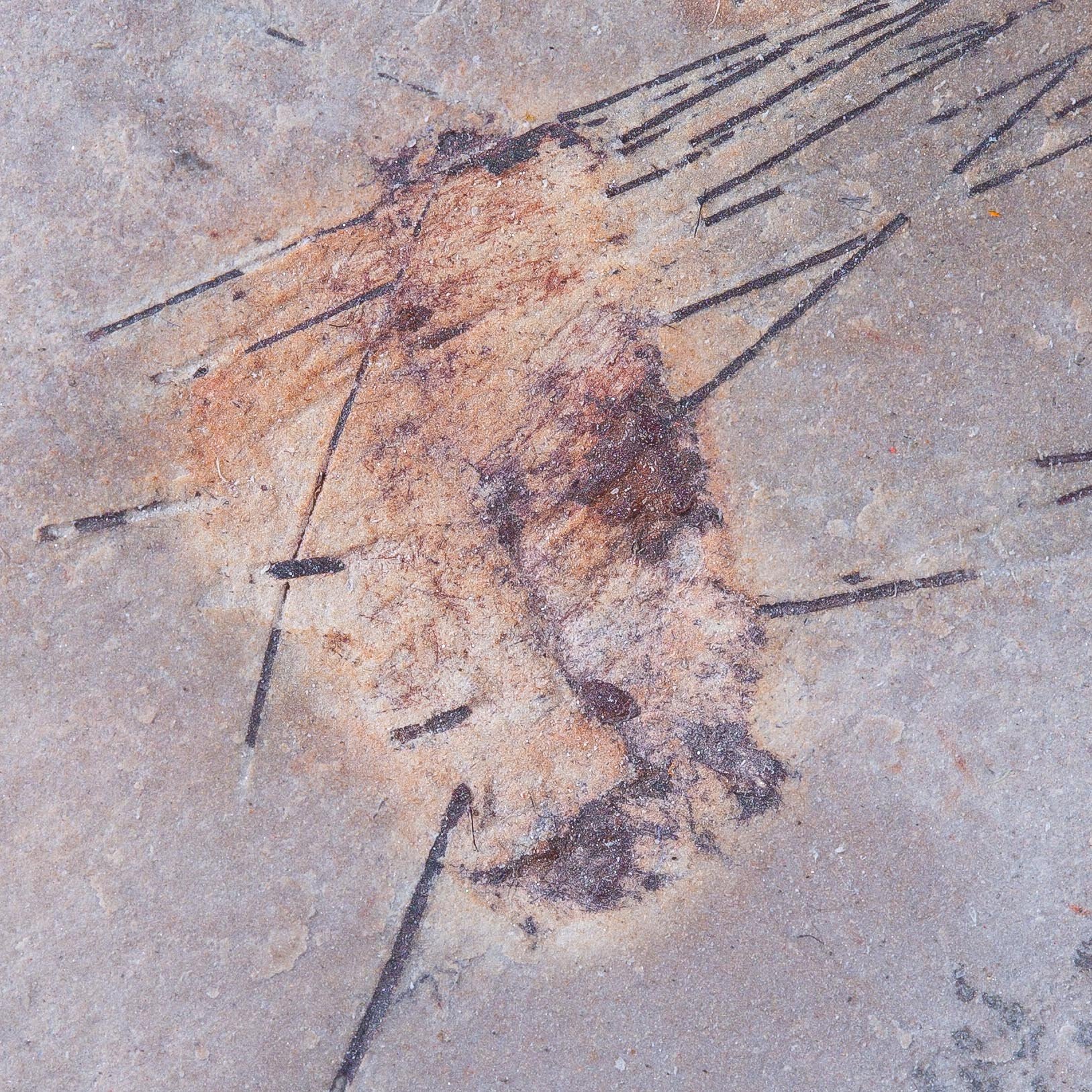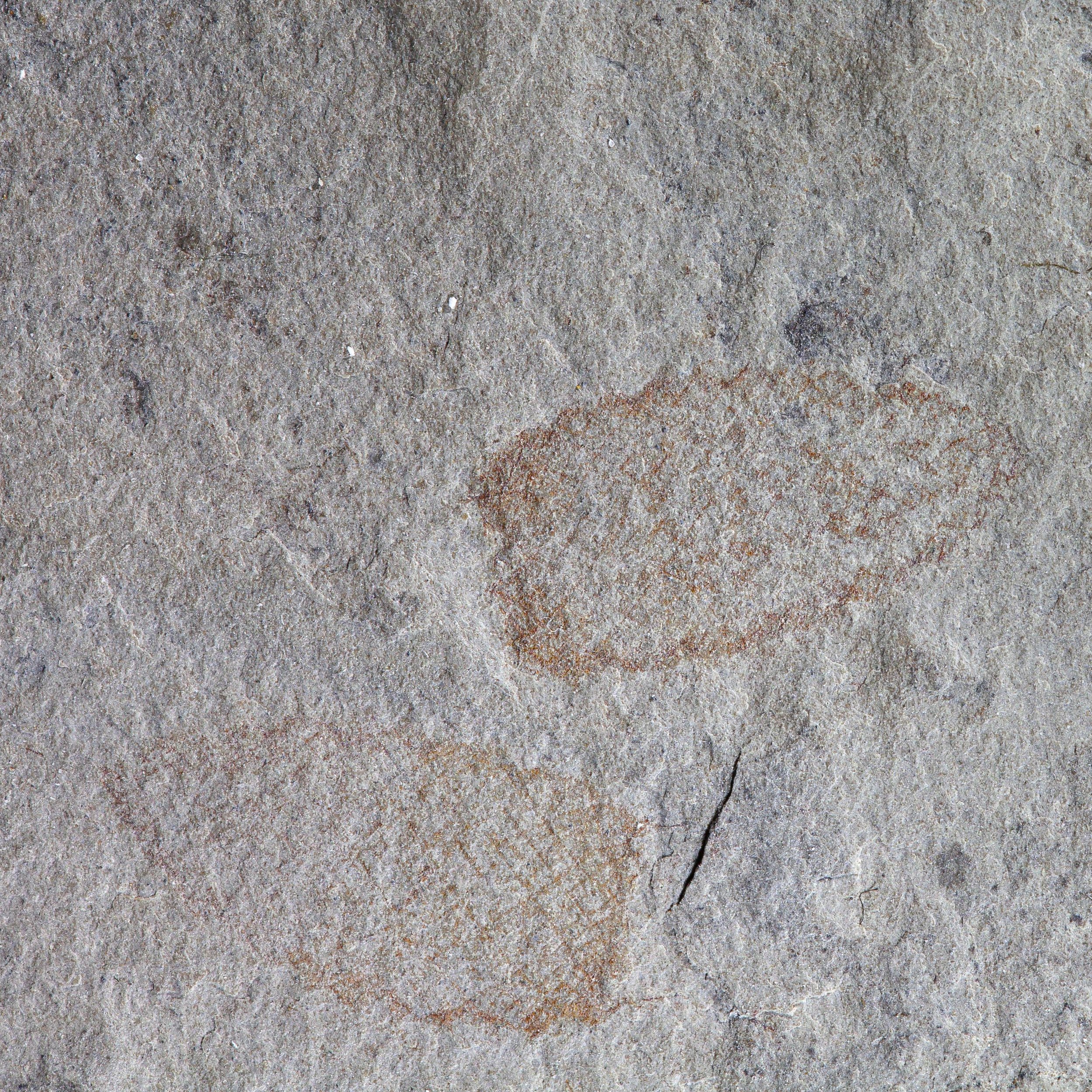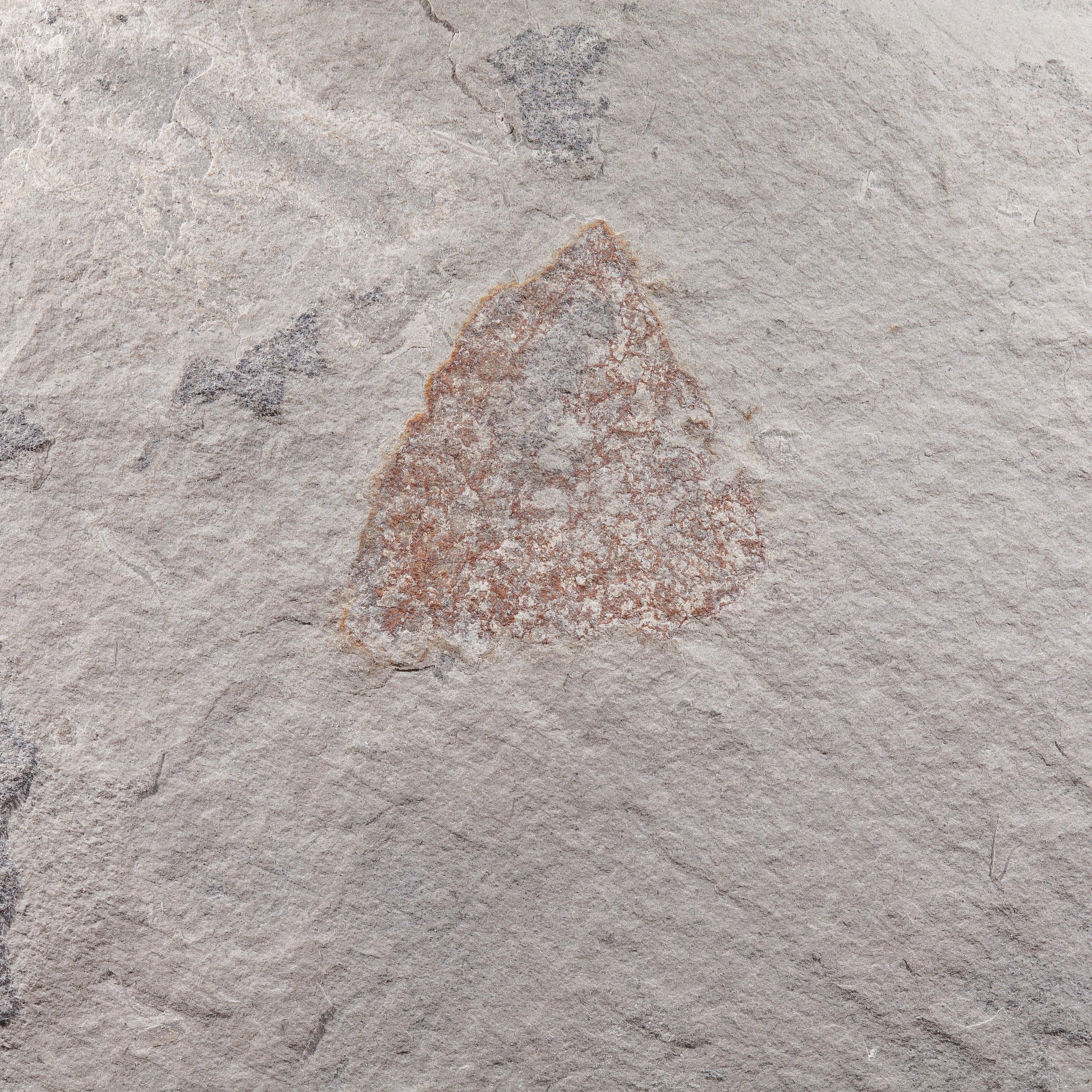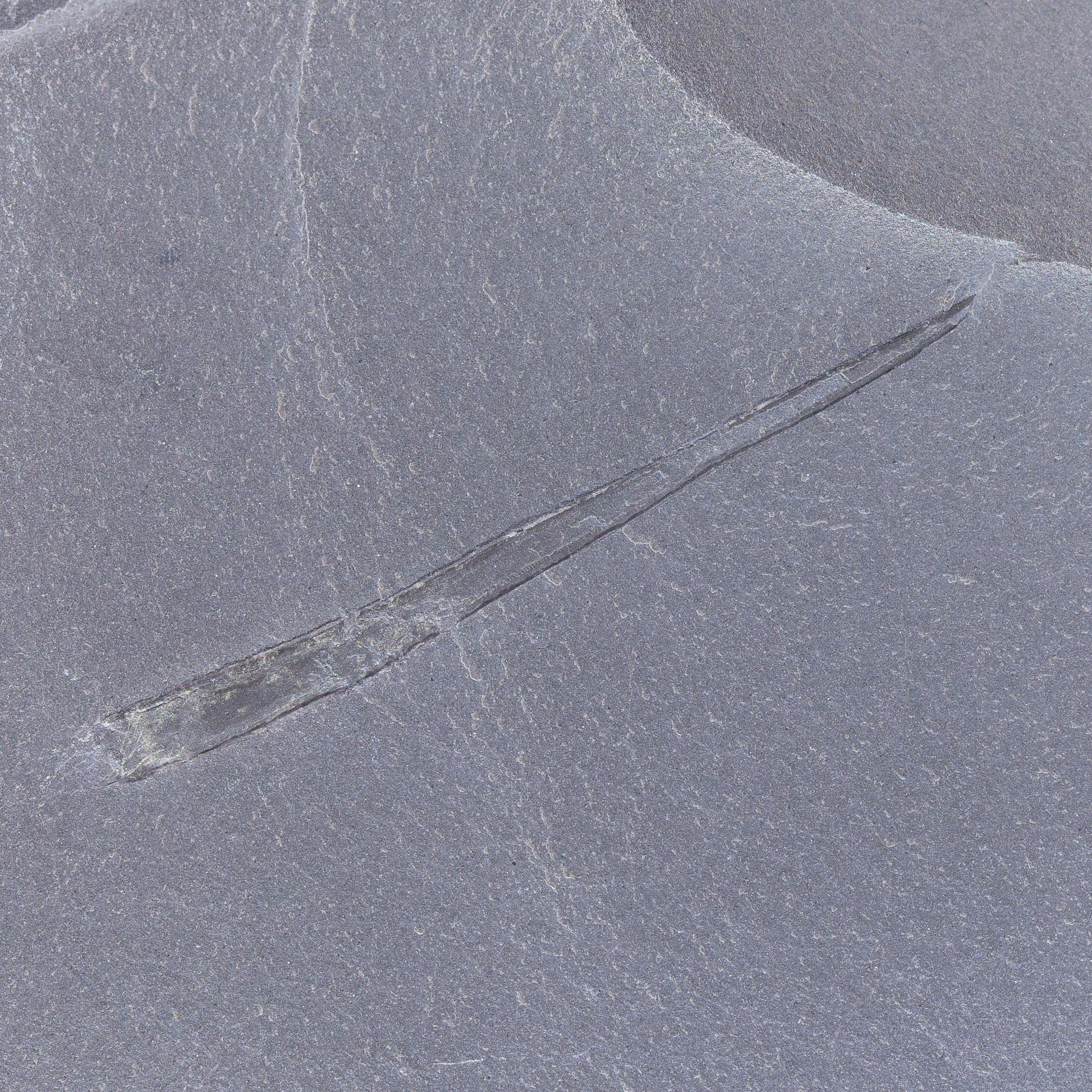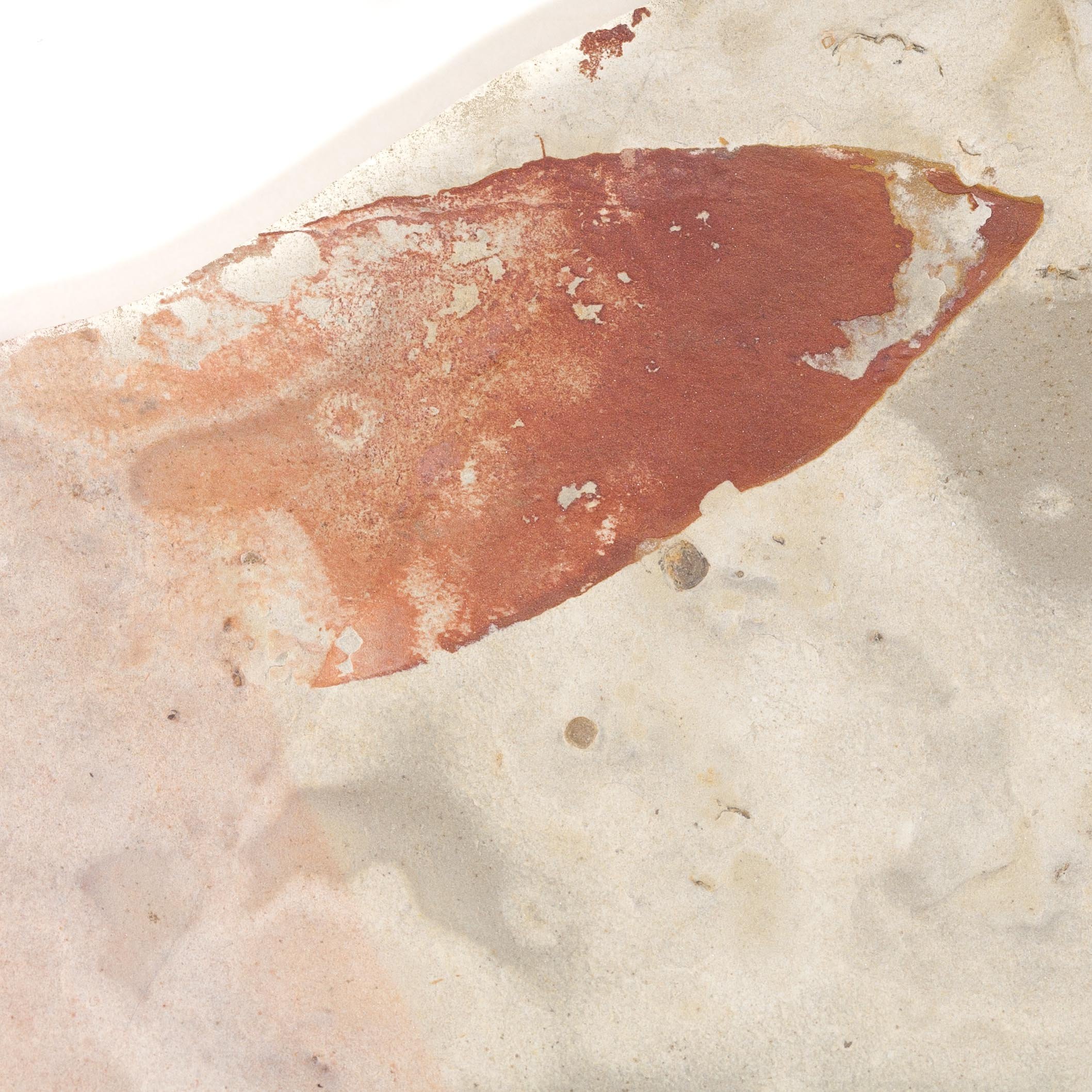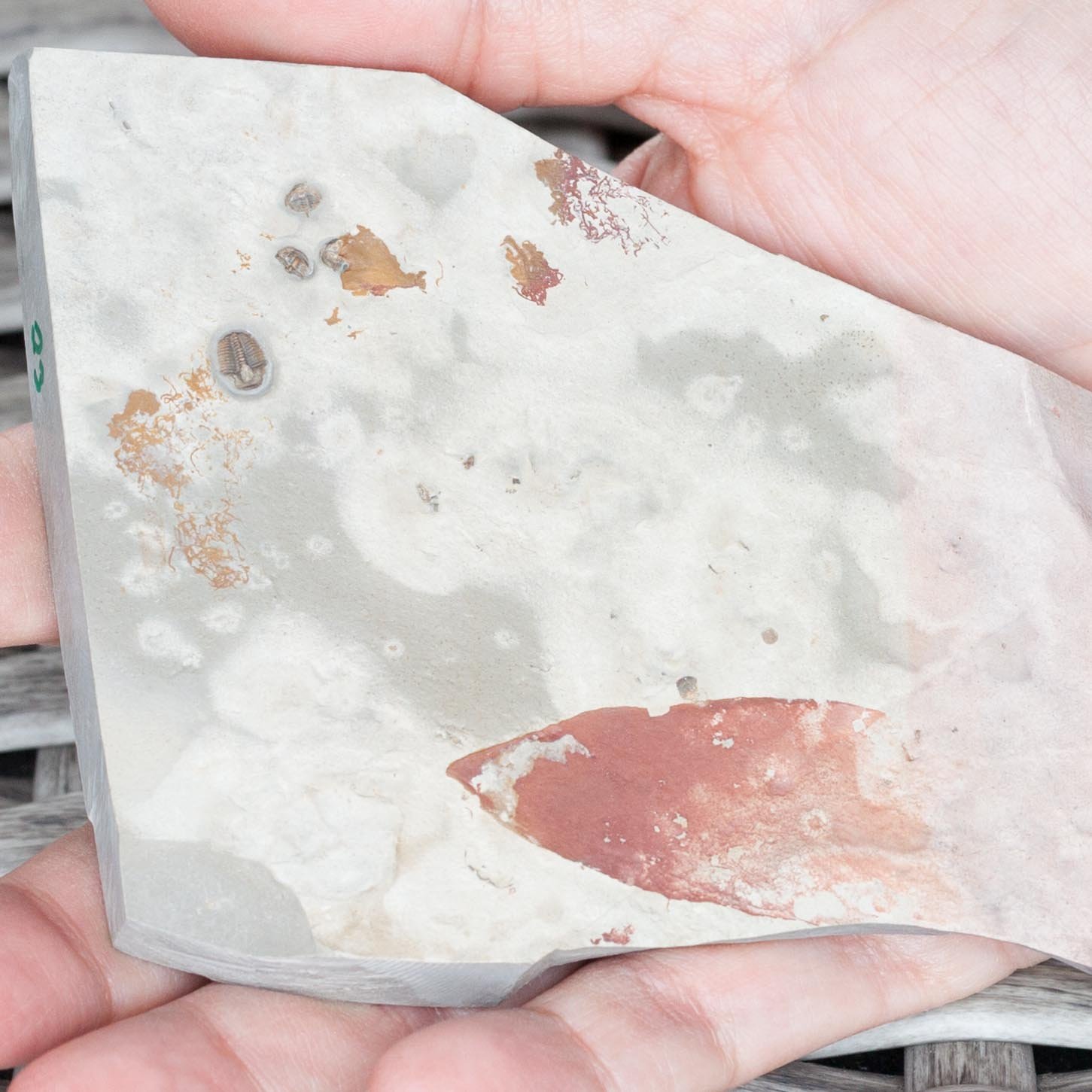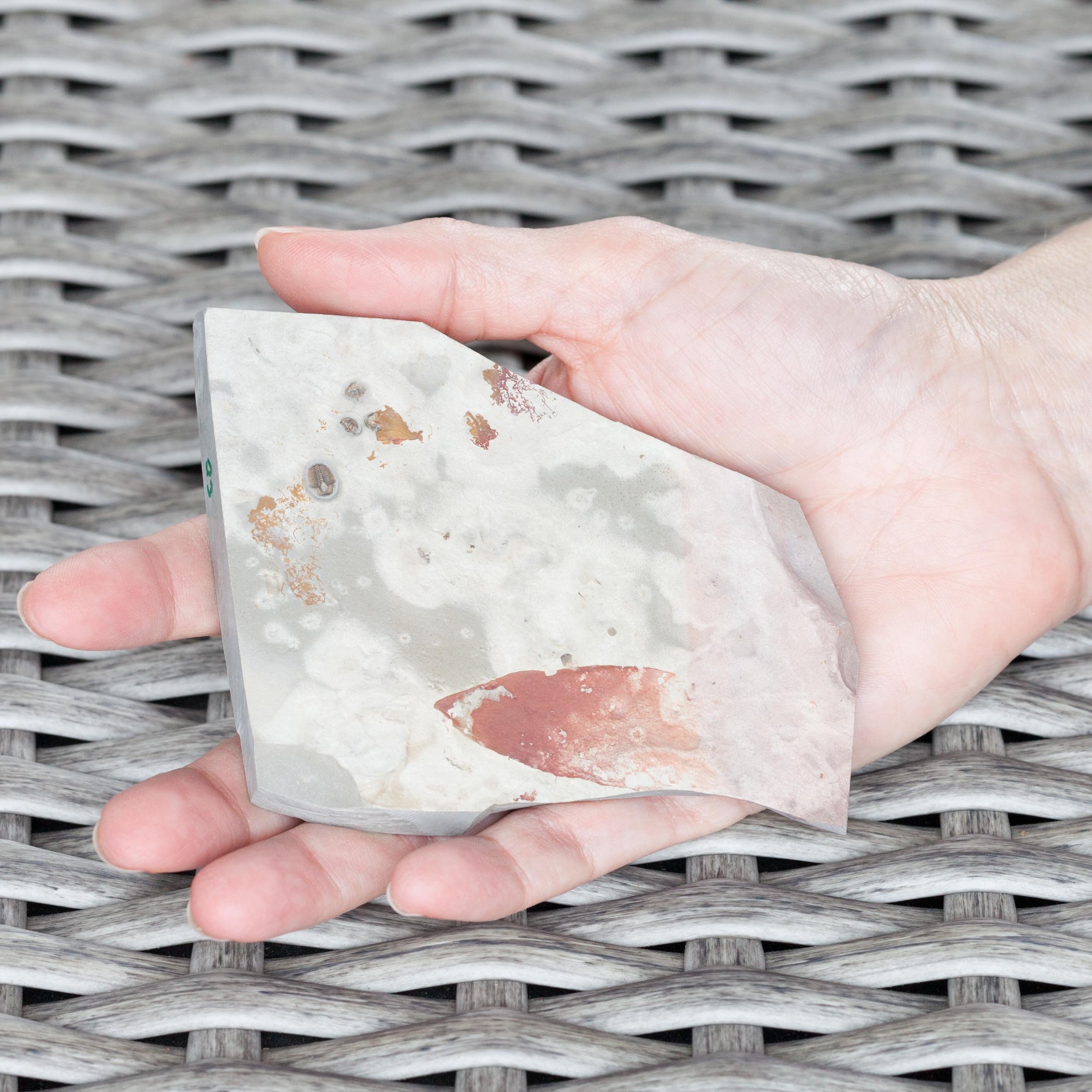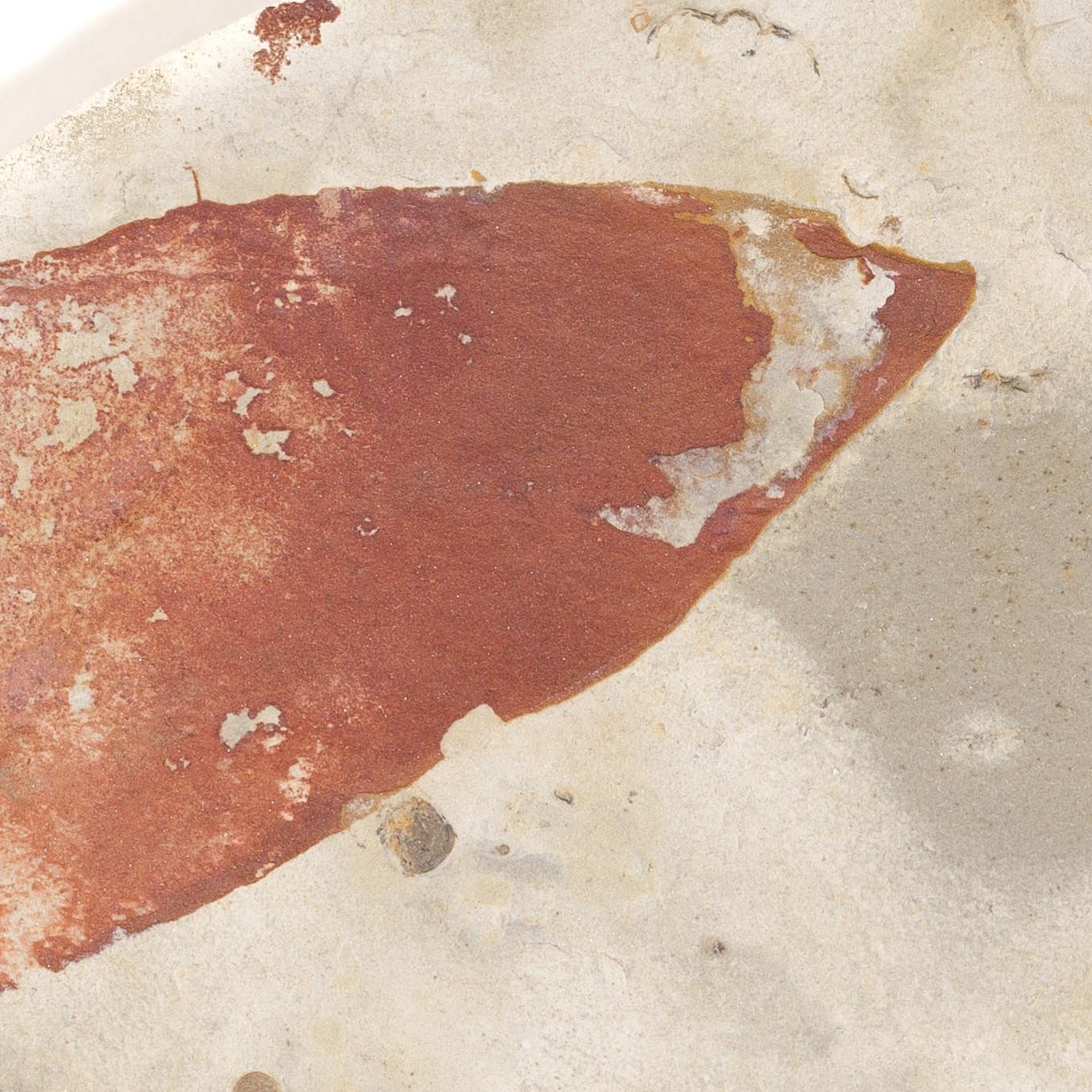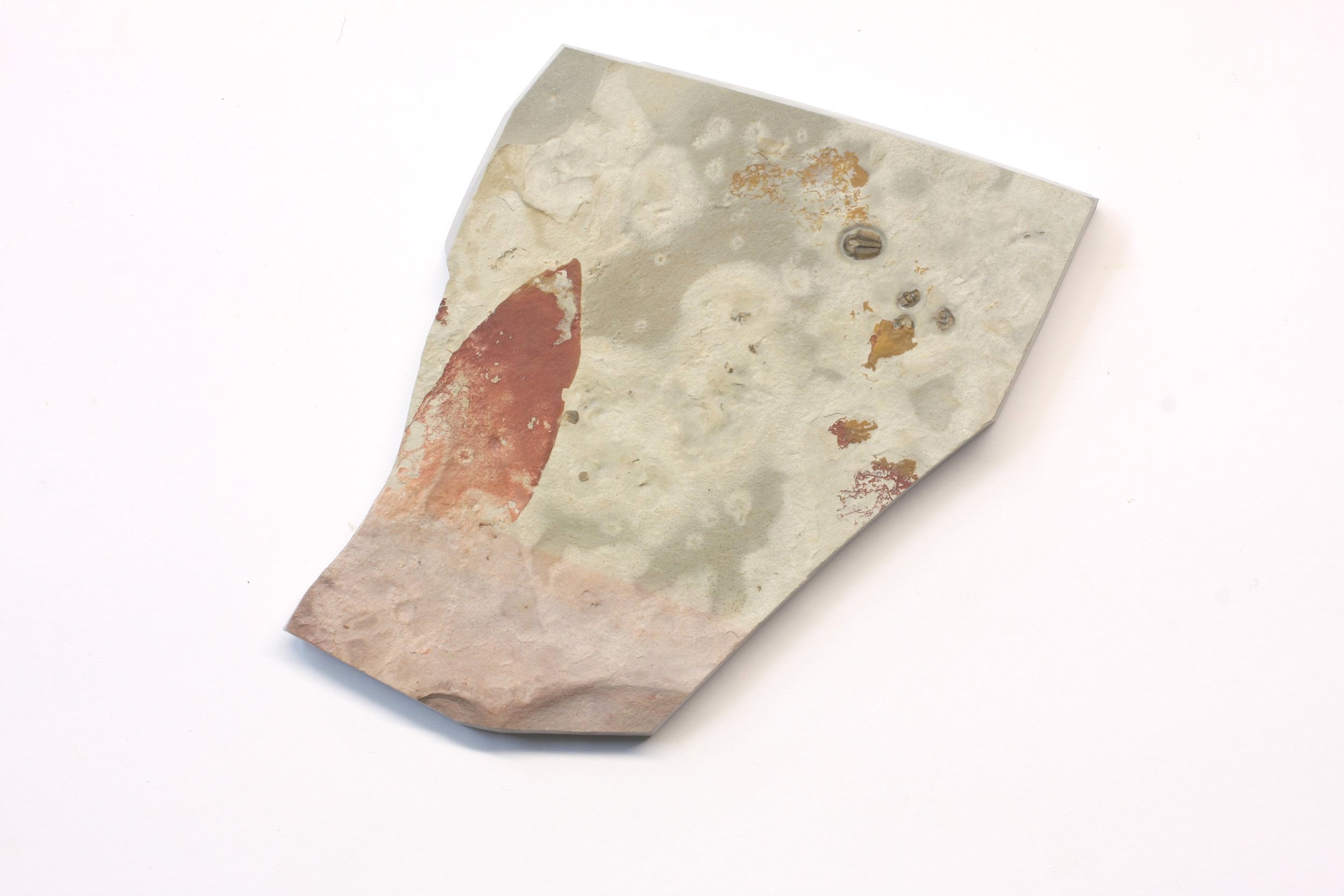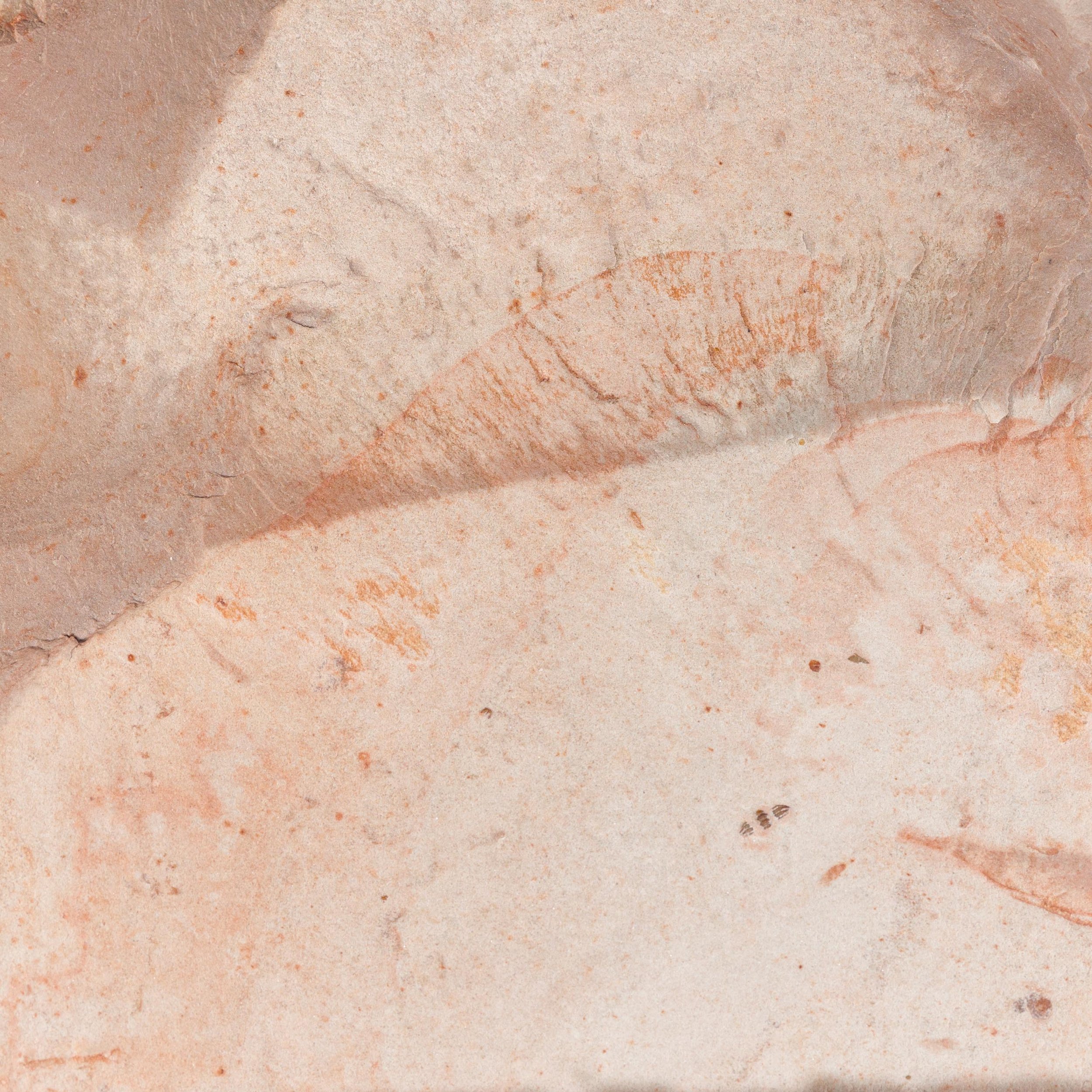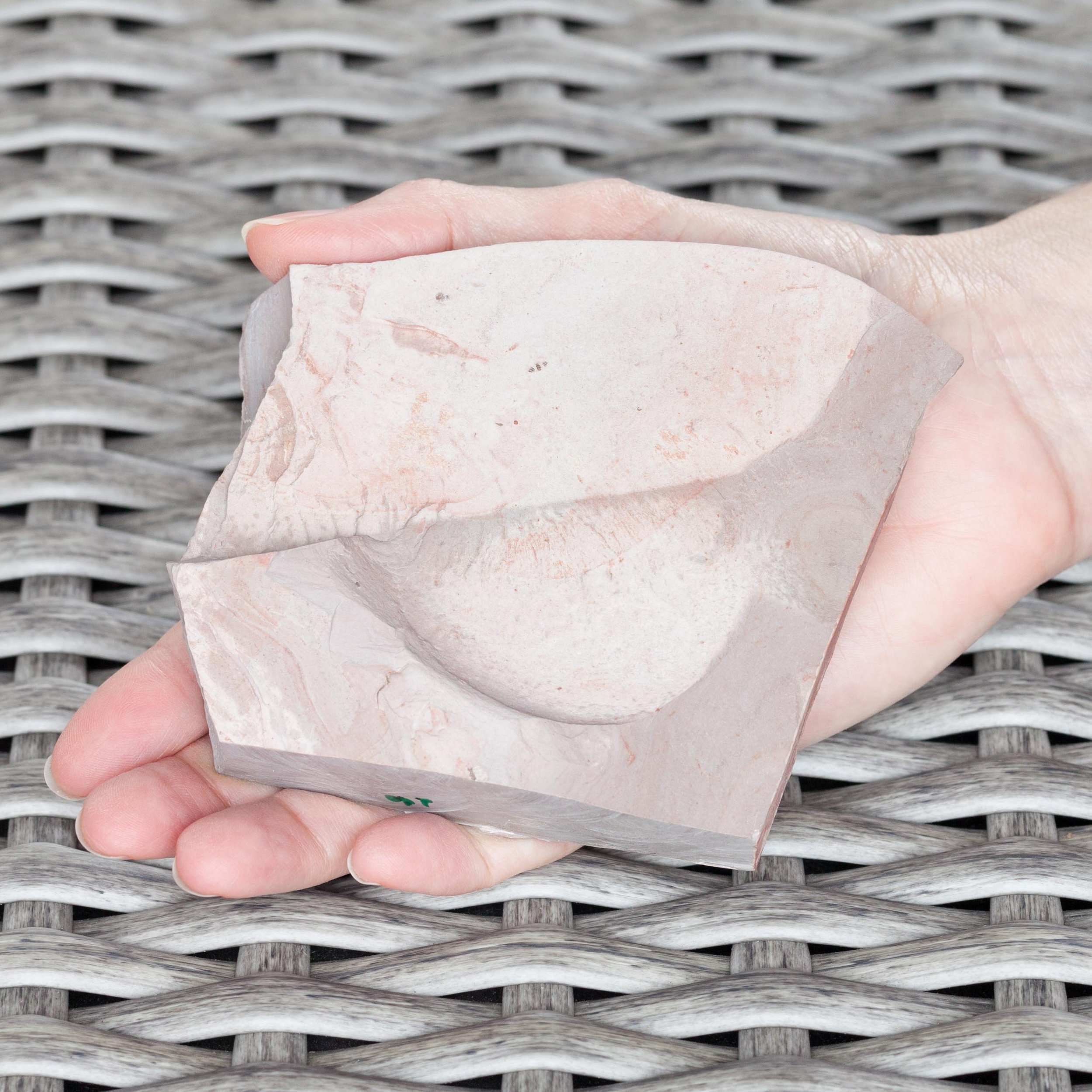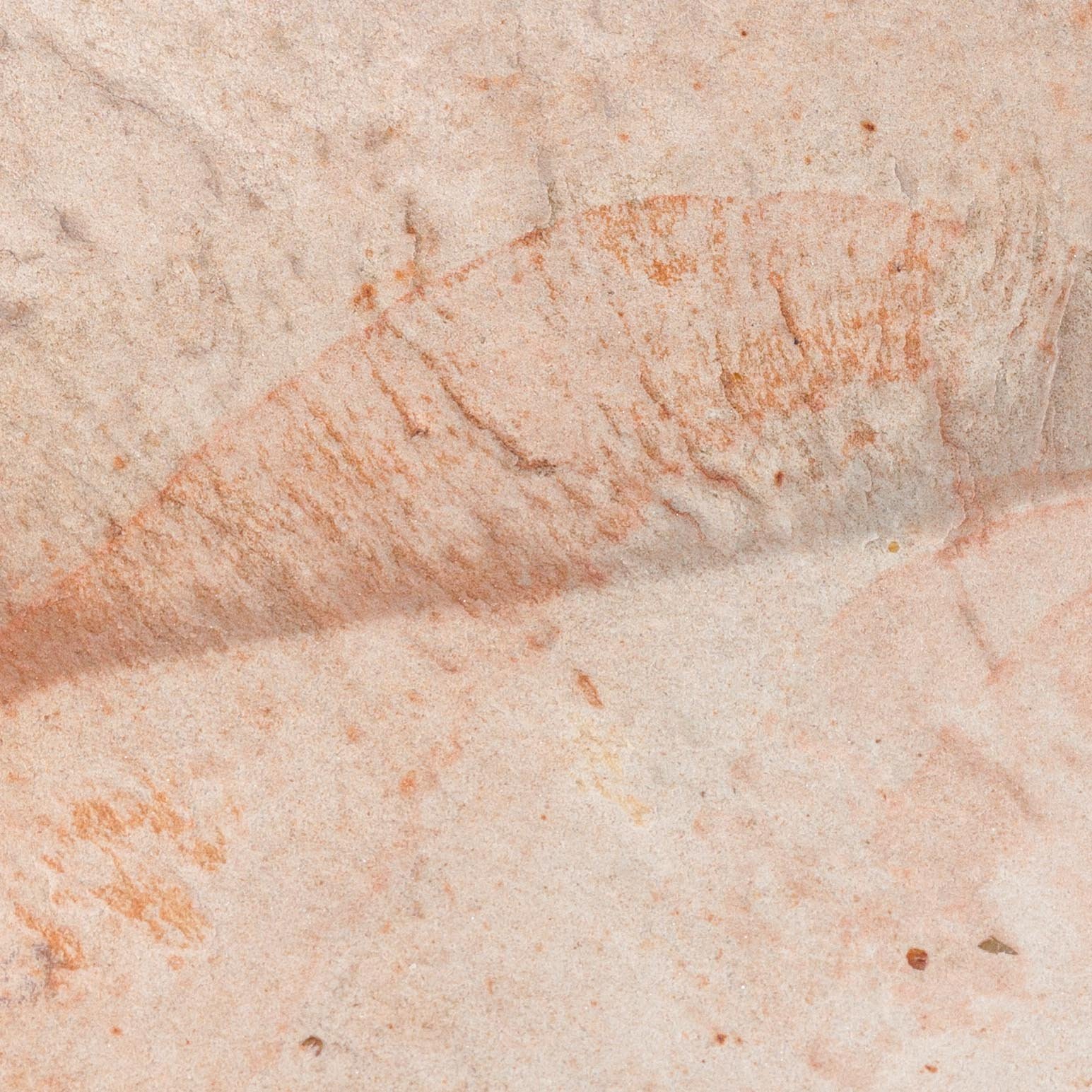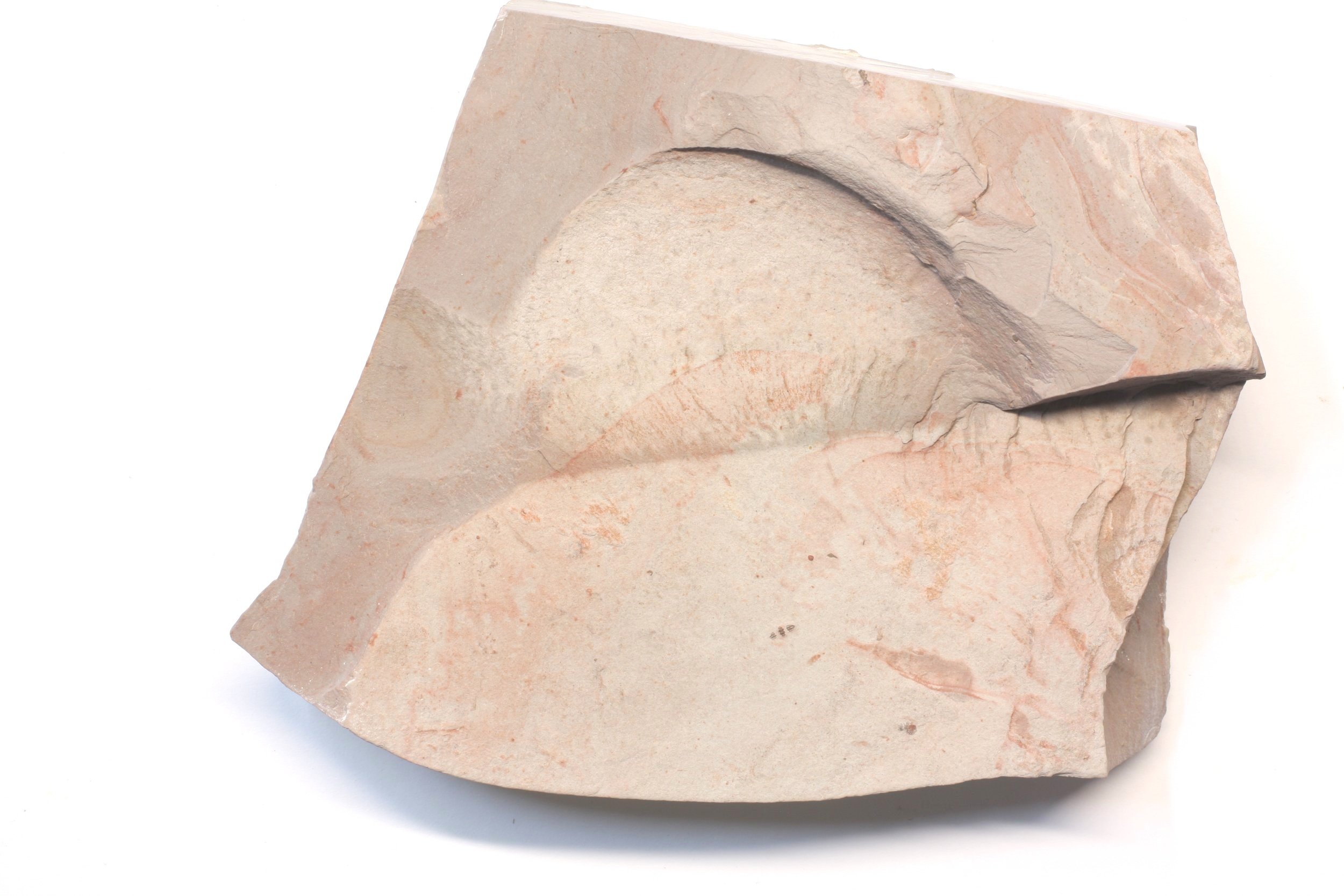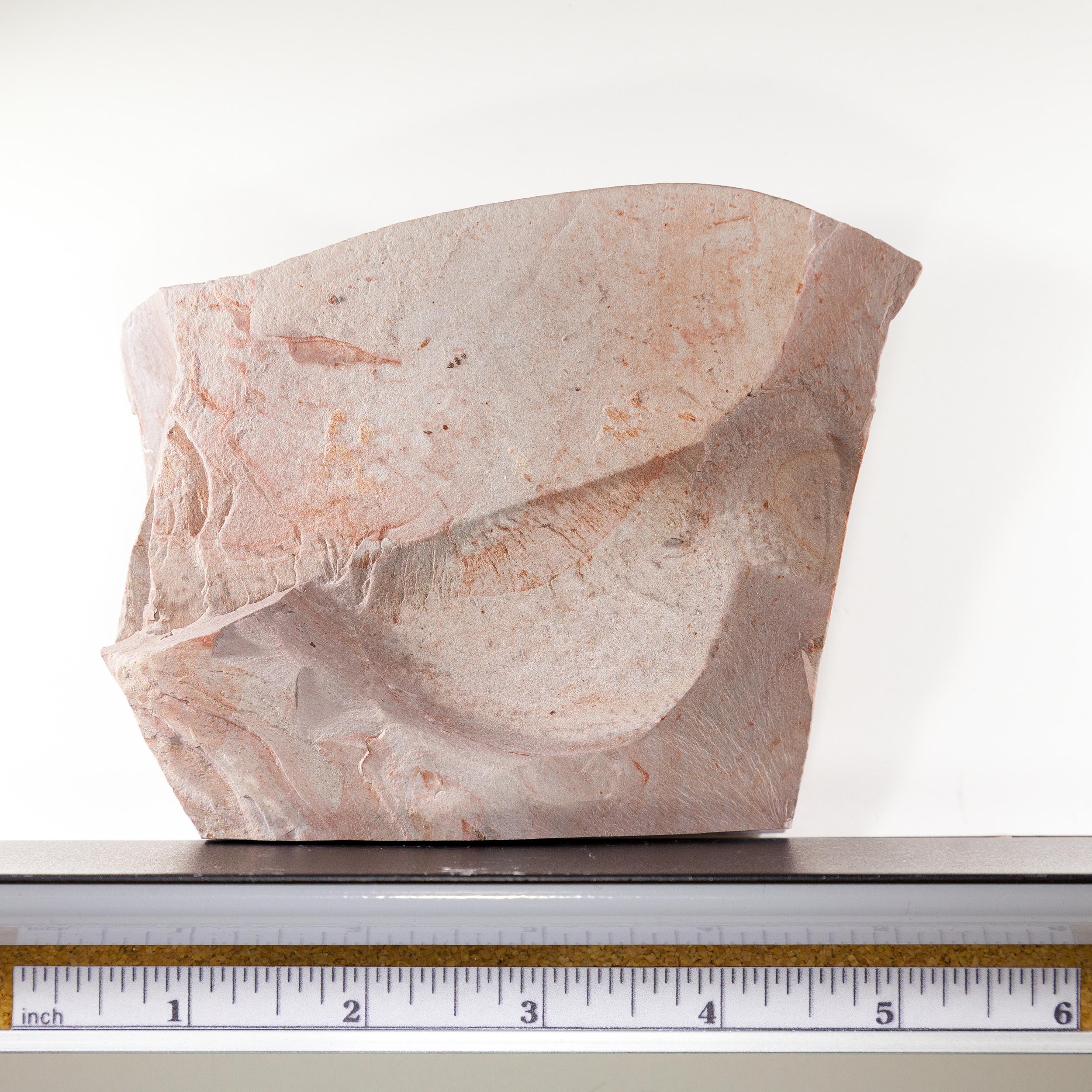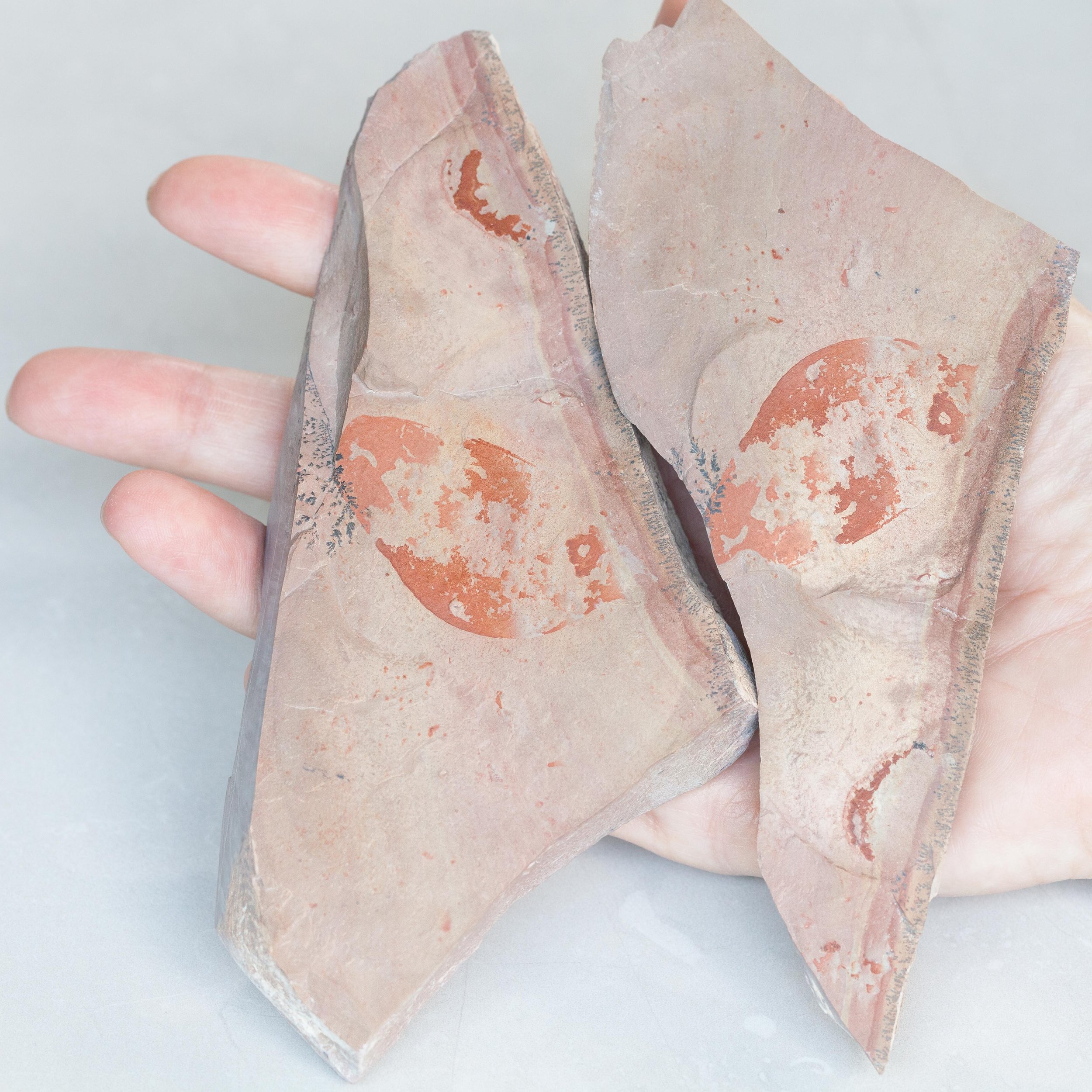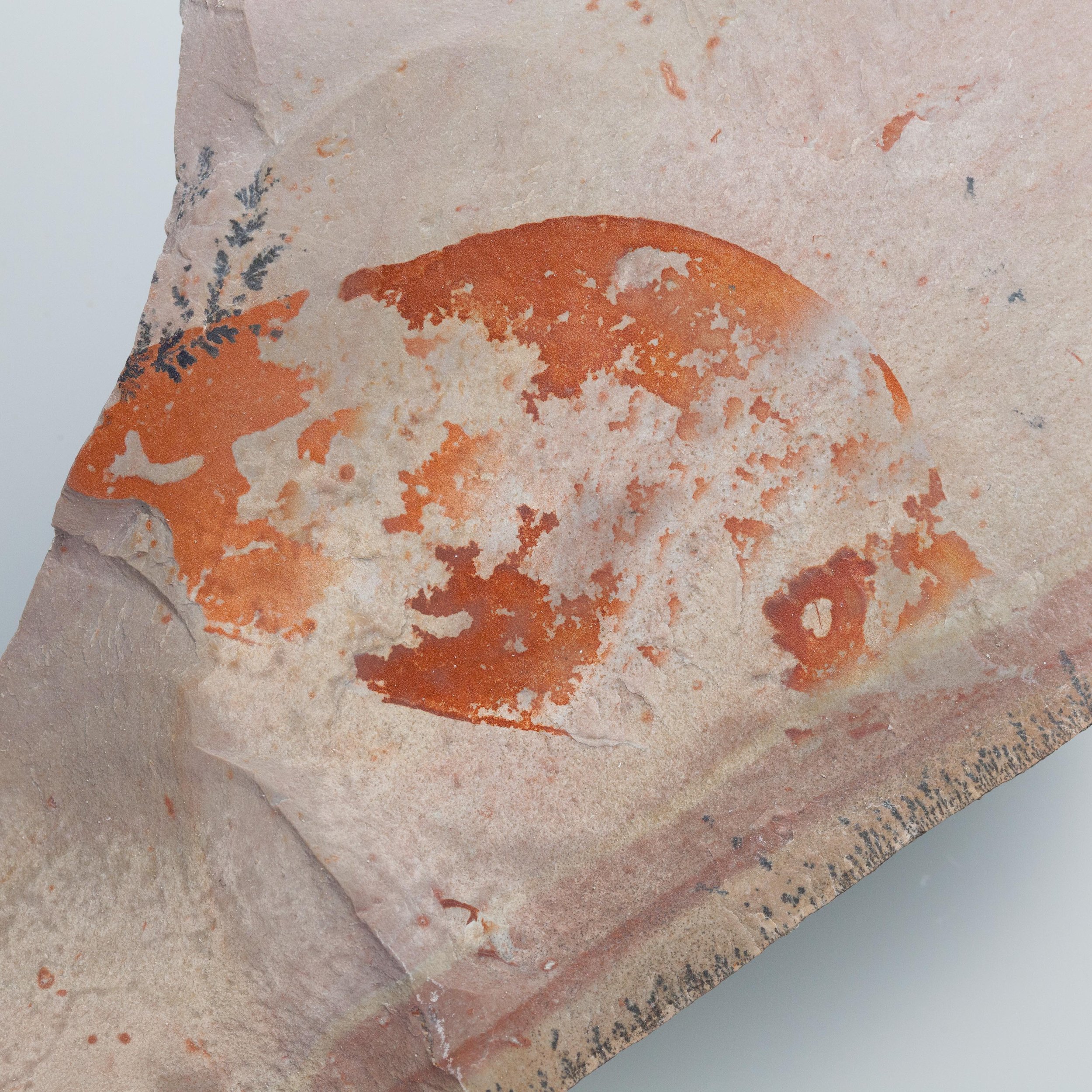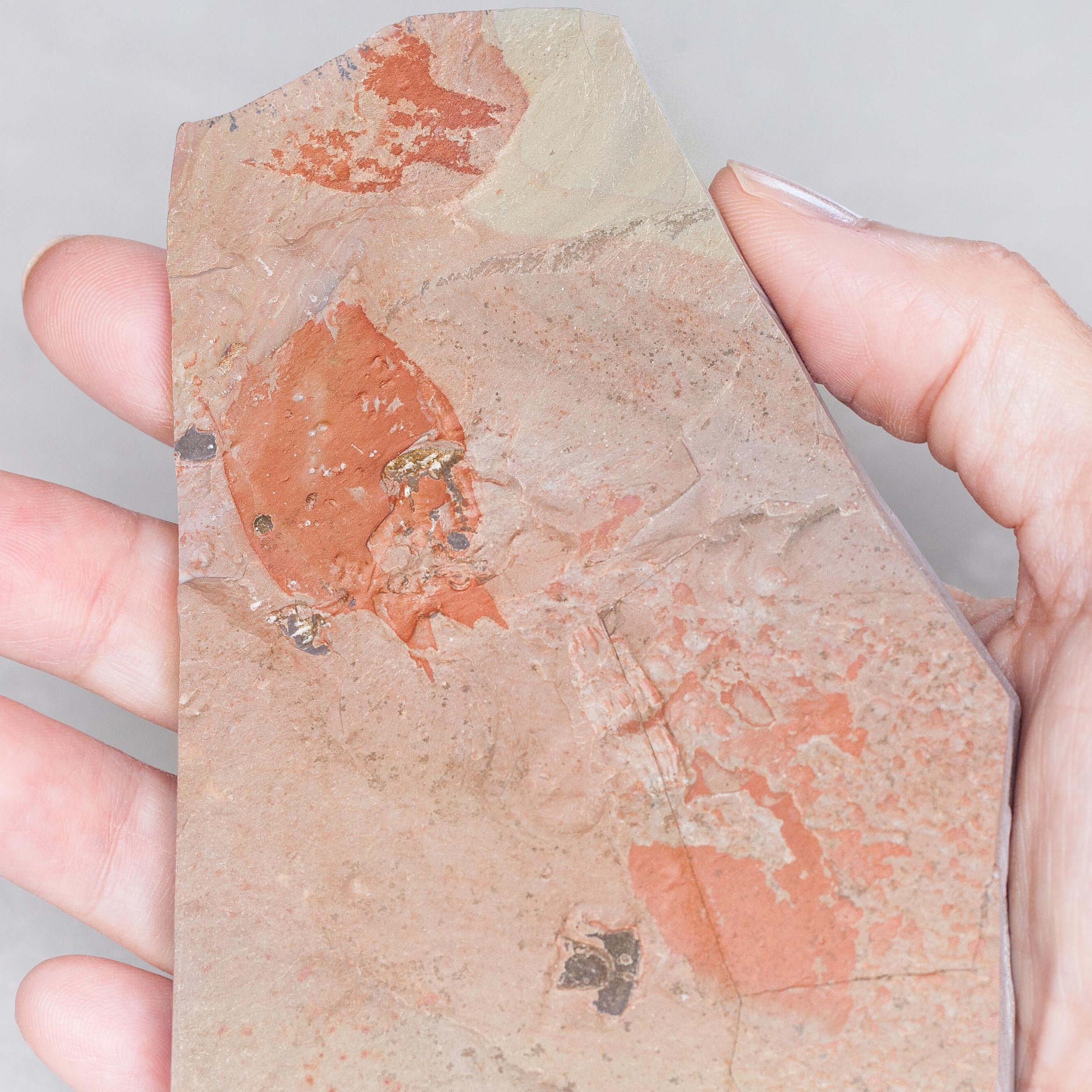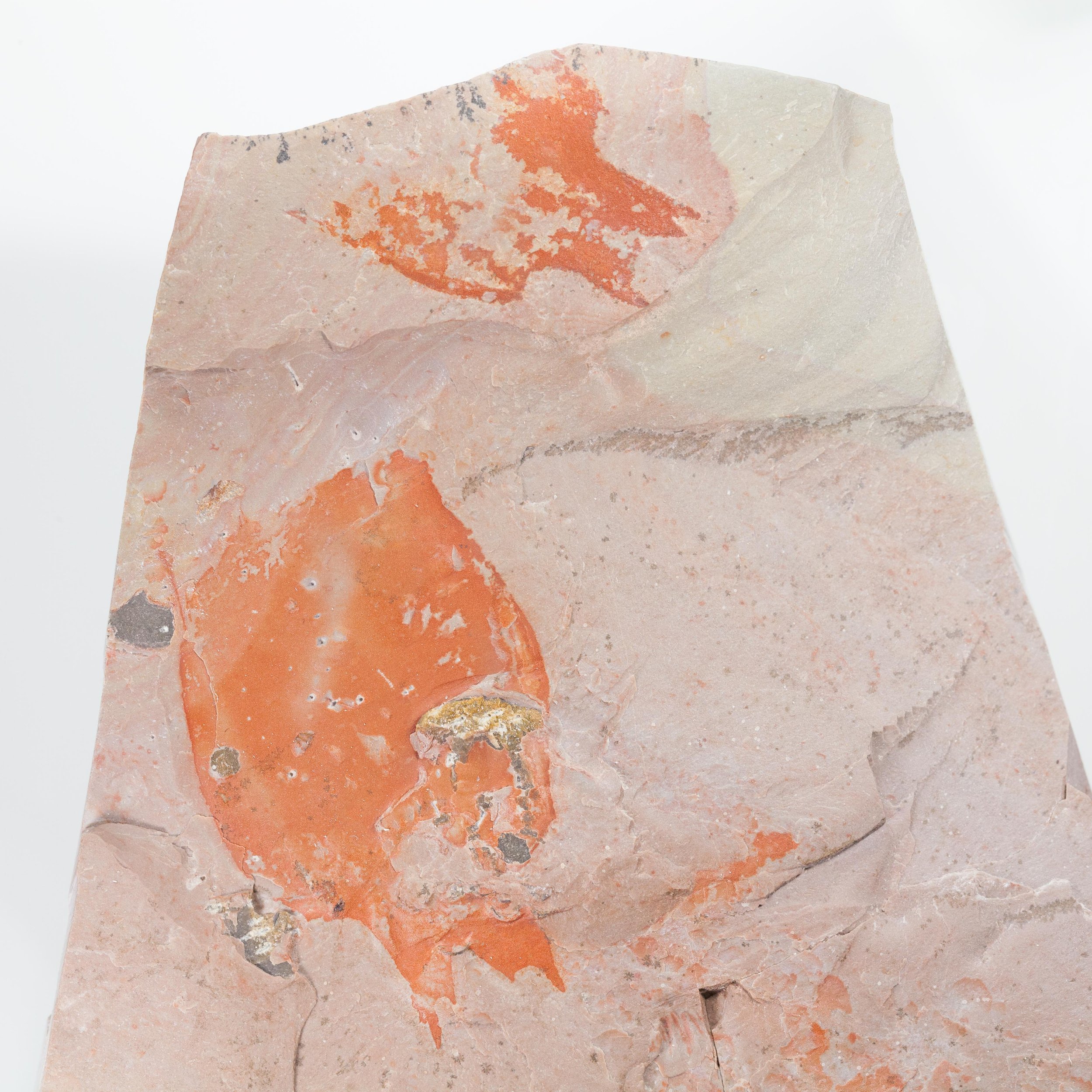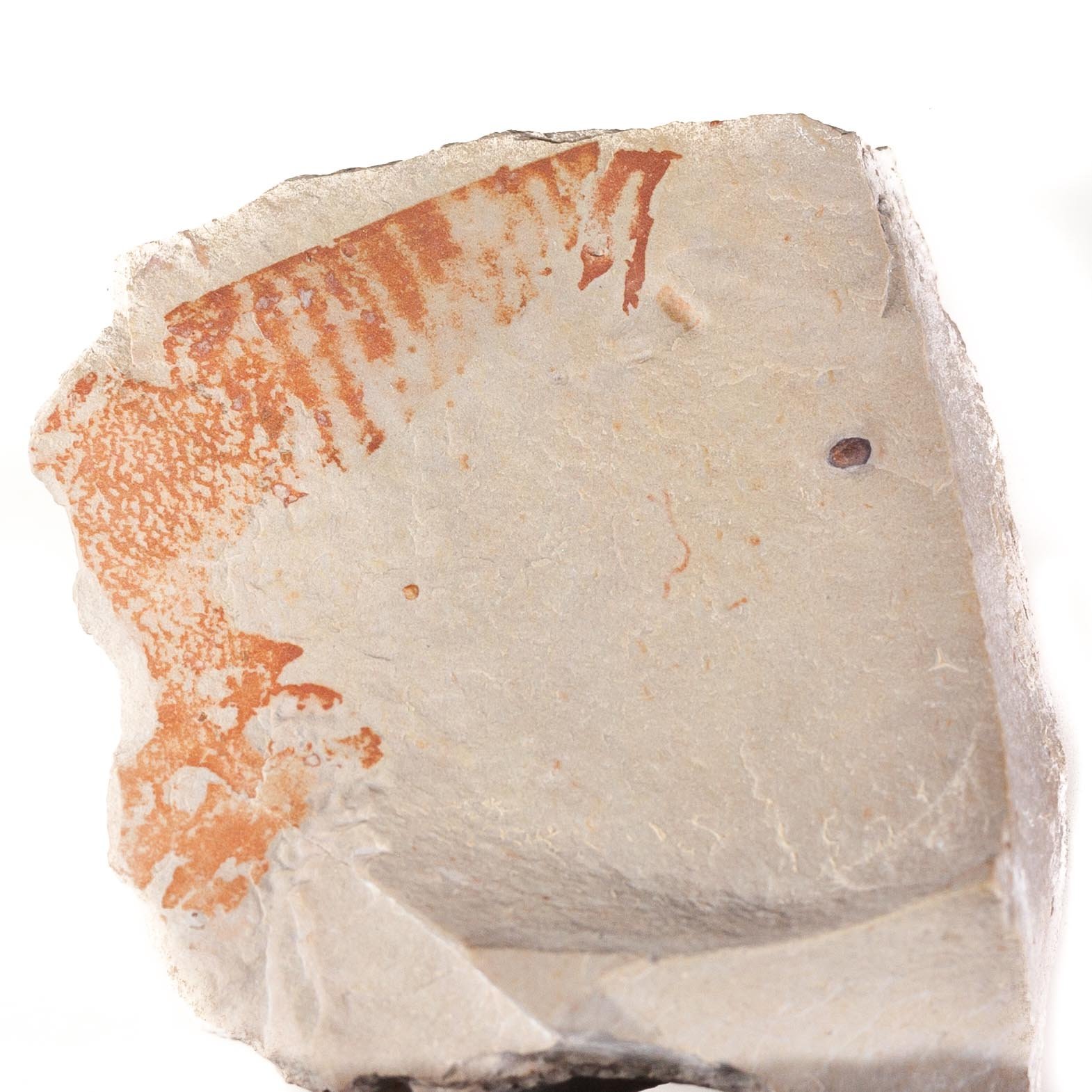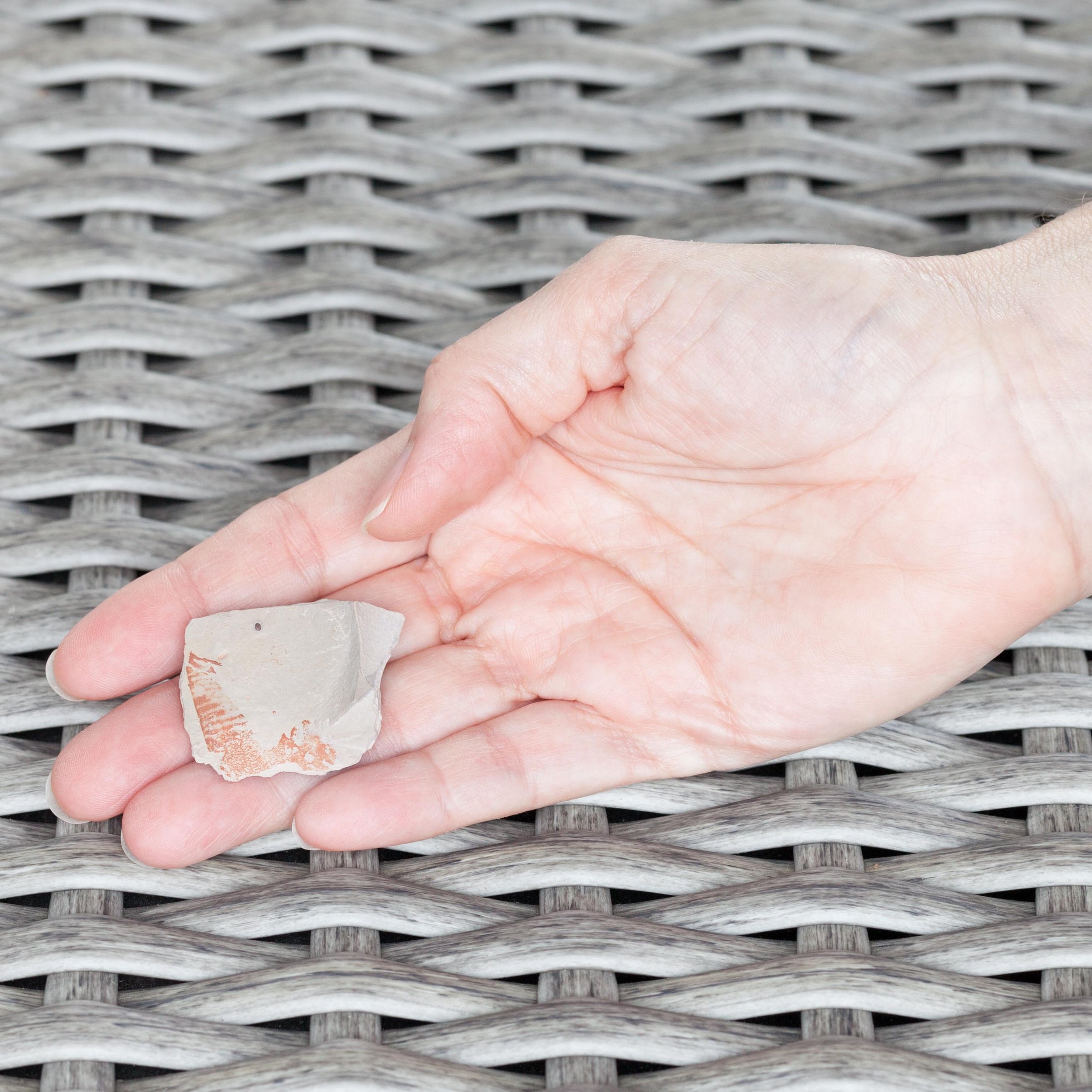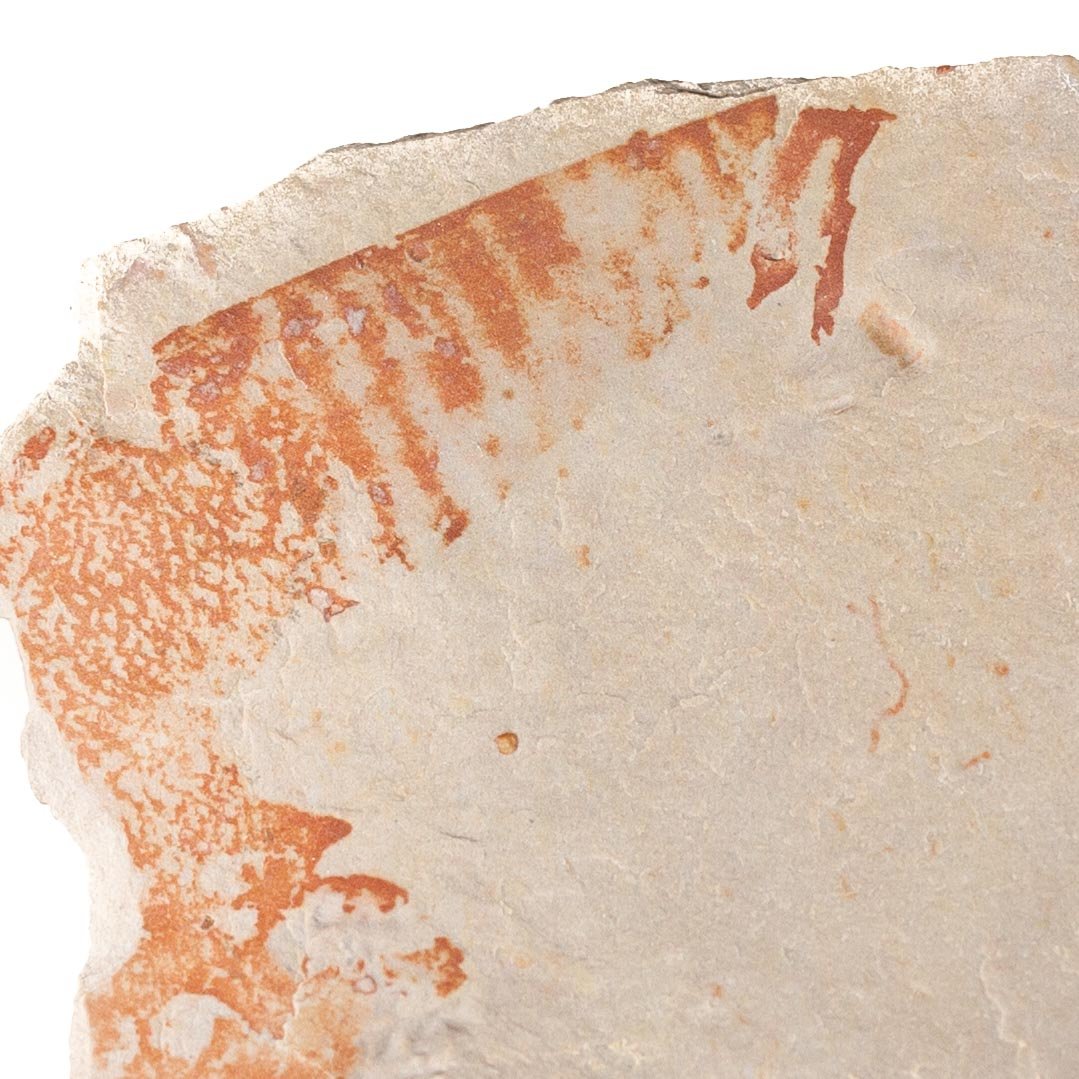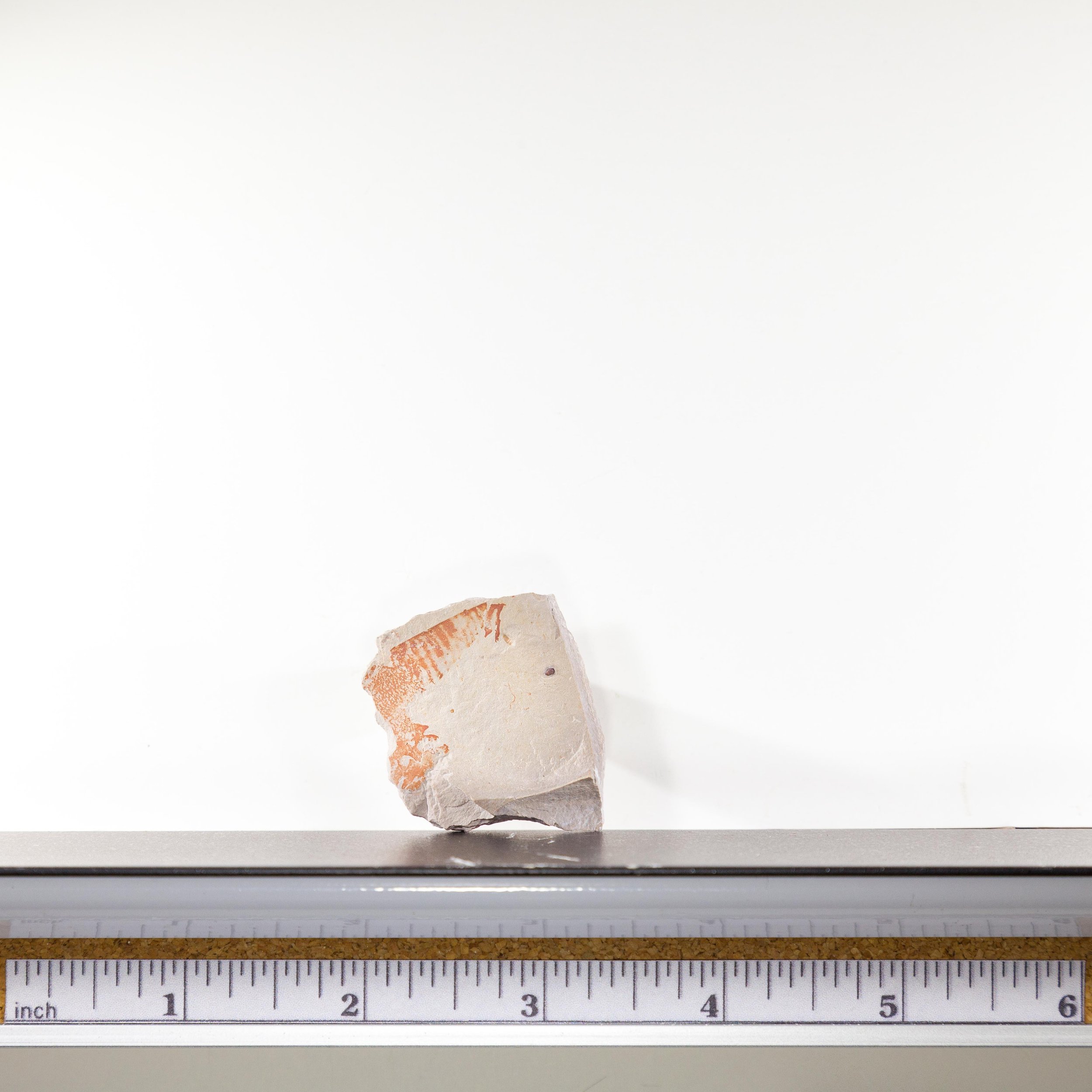Hurdia sp.
Vendor: Gold Bugs
SKU Number: SQ6574857
An extremely rare radiodont Hurdia sp. from the sought after Middle Cambrian, Wheeler Shale Formation of Utah.
Like its close cousin Anomalocaris, this “great-appendaged” arthropod terrorized the Middle Cambrian sea floor as the apex predator of its time. Complete radiodont arthropods are exceedingly rare, with very few in existence.
This specimen is complete, subject to taphonomy which has left it bent and possibly stretched but mostly intact. The abbreviated raptorial appendages this species is known for are present and clearly defined. The mouth is visible as well and the swimming flaps and forked tail complete the specimen.
As with another well known Hurdia from Utah the bivalved head shield covering, or helmet, appears to be missing, or did not preserve due to its thin test.
Incredible opportunity for collectors to own a complete radiodont!
Full dimensions are listed below (Measurements assume the full outstretched length - not the curved length).
Vendor: Gold Bugs
SKU Number: SQ6574857
An extremely rare radiodont Hurdia sp. from the sought after Middle Cambrian, Wheeler Shale Formation of Utah.
Like its close cousin Anomalocaris, this “great-appendaged” arthropod terrorized the Middle Cambrian sea floor as the apex predator of its time. Complete radiodont arthropods are exceedingly rare, with very few in existence.
This specimen is complete, subject to taphonomy which has left it bent and possibly stretched but mostly intact. The abbreviated raptorial appendages this species is known for are present and clearly defined. The mouth is visible as well and the swimming flaps and forked tail complete the specimen.
As with another well known Hurdia from Utah the bivalved head shield covering, or helmet, appears to be missing, or did not preserve due to its thin test.
Incredible opportunity for collectors to own a complete radiodont!
Full dimensions are listed below (Measurements assume the full outstretched length - not the curved length).
Vendor: Gold Bugs
SKU Number: SQ6574857
An extremely rare radiodont Hurdia sp. from the sought after Middle Cambrian, Wheeler Shale Formation of Utah.
Like its close cousin Anomalocaris, this “great-appendaged” arthropod terrorized the Middle Cambrian sea floor as the apex predator of its time. Complete radiodont arthropods are exceedingly rare, with very few in existence.
This specimen is complete, subject to taphonomy which has left it bent and possibly stretched but mostly intact. The abbreviated raptorial appendages this species is known for are present and clearly defined. The mouth is visible as well and the swimming flaps and forked tail complete the specimen.
As with another well known Hurdia from Utah the bivalved head shield covering, or helmet, appears to be missing, or did not preserve due to its thin test.
Incredible opportunity for collectors to own a complete radiodont!
Full dimensions are listed below (Measurements assume the full outstretched length - not the curved length).
Additional Information
Hurdia was a Radiodont with raptorial fore-limbs used for filter feeding on microscopic organisms floating near the ocean surface. It has been suggested that the first planktonic animals in the Cambrian initiated the biological pump, which, in turn, fueled the diversification of complex animal communities on the seafloor.
The Radiodonts were a group of Arthropods that appeared early in the Cambrian and appear to have been the first free-swimming raptorial predators, a role subsequently taken on by animals such as Sharks, Fish, Squid, and marine Tetrapods, which appeared to place them firmly at the top of the Cambrian food-chain. These Radiodonts had rather complex exoskeletons, which tended to become disarticulated before being preserved.
Recently, large Radiodonts from the early Cambrian have been discovered that have feeding organs adapted not for raptorial predation but for filter feeding. Filter feeding has repeatedly appeared in the largest members of other groups of raptorial marine predators, including Sharks, Whales and several types of Fish, making this a predictable occurrence in large raptorial Radiodonts, a view that was supported by the discovery of a second such species, the two meter long Aegirocassis from the Early Ordovician.
References:
Pahvantia hastata - Sciency Thoughts
Pahvantia hastata - University of New England
Hurdia

